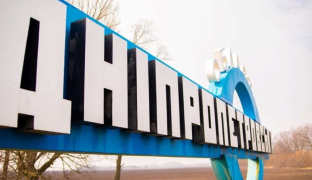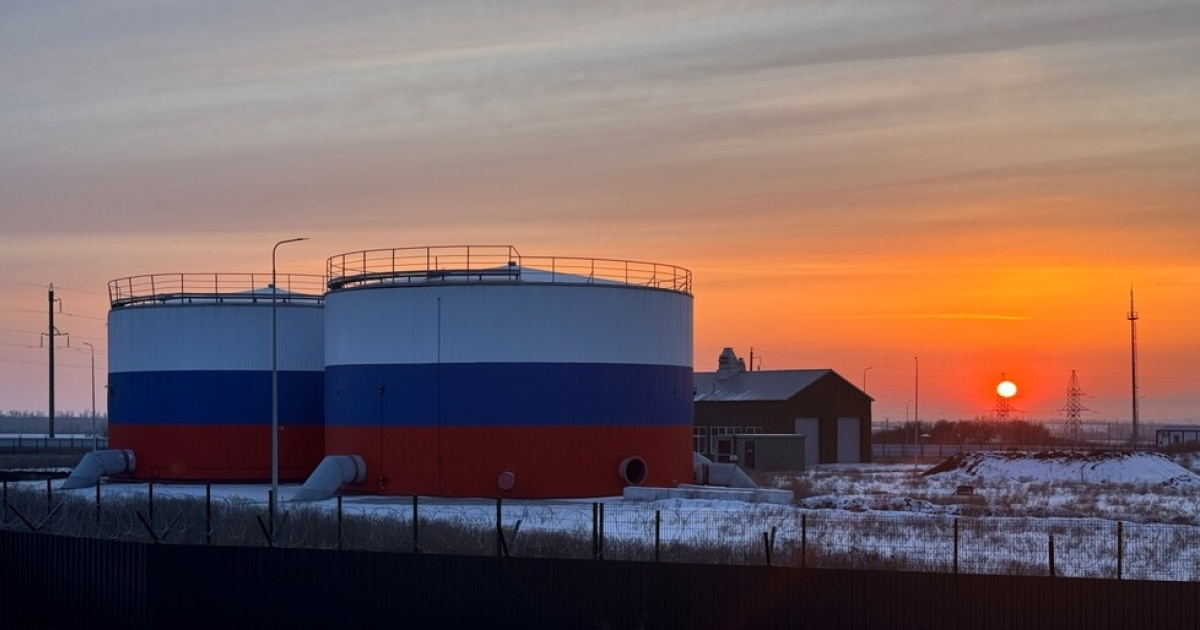In 2020, Ukraine timidly joined the system decarbonization process that is already taking place in most EU countries. OstroV explains how we came to this, what it is, why it is inevitable and what it will mean for the country's coal industry.
On July 7, 1989, the Socialist Donbass newspaper announced the intention of the soviet ministry of coal industry to close 21 mines in the Donetsk oblast. According to the authors of the article, the rest were divided into three categories, according to the degree of their prospects. Only the mines of the first and second categories would be eligible for investment.
As follows from the text, earlier in the same year, several coal mining enterprises were already closed "out of the blue" in the Donetsk region. The authors of the article were indignant: Moscow did not care about the fate of the numerous mining villages, which it doomed to decline and become extinct by its decision. They insisted that the old and "unpromising" mines have numerous off-balance reserves, and production can be continued and increased. The miners quoted by the journalists vouched to "fight" for their mines.
From today's point of view, the USSR Ministry of Coal Industry was both right and wrong.
Coal mining in the Donbas, the oldest coal-mining region of the Soviet Union, mostly did not justify itself economically already by that time: local coal was not of the best quality and laid in thin seams at kilometers depths. Many mines were 80-100 years old and have not known modernization for a long time. Investing in them meant burying money almost literally.
However, shutting down mines "out of the blue" was hardly a sensible policy. The one-time deprivation of jobs for thousands of people, especially in single-industry towns, threatened the entire region with economic and social upheavals.
Moreover, it was simply unfair. This is what the Socialist Donbass wrote: the region worked for the entire vast country for decades, providing the basis for its economy, and then, having become decrepit, was cynically left alone with the catastrophic consequences of this "Stakhanovite" coal mining.
The Union did not manage to implement the planned restructuring. Miners from the Kuzbass in western Siberia went on strike already on July 11, dissatisfied with working conditions; the strike spread to the entire USSR a few days later. The soviet government managed to calm the indignation - temporarily - only by signing excused obligations to the miners. Moscow had no time for unpopular reforms.
The strike had the avalanche effect. An extremely large group of active and dissatisfied citizens suddenly spontaneously formed in the Union, which managed to create its own coordination structures (strike committees) and realize its potential to influence the government.
Moreover, it began to accumulate widespread disaffection from individual citizens and attract organized allies. Until the collapse of the USSR, miners' strikes broke out here and there in its republics, to which more and more non-miners joined. Both the new national-democratic political forces and their opponents from the communist nomenklatura began to assess and test their prospects and opportunities to steer this element.
The problem of the coal industry has become political! As a result, the restructuring of the coal industry in Ukraine did not take place either in 1989, or in the 1990s, in the 2000s, or in the 2010s. The fears of new outbreaks of discontent of miners and the desire to preserve political leverage in their person were added to the almost unlimited corruption opportunities that were guaranteed by the large subsidized industry that had grown into the state structures and the national economy.
Meanwhile, the closure of mines inevitably took place, but without any systemic strategies, plans for the future fate of their workers and associated settlements. This continued until 2014, when most of the coal mining enterprises in Ukraine ended up in territories outside the control of the Ukrainian government.
East wounds
According to the Ministry of Energy of Ukraine, as of May 1, 2015, 95 mines operated in the territories of Luhansk and Donetsk oblasts under the actual control of the Russian Federation: 67 state-owned and 28 private. According to the available information, a significant part of them are flooded today.
The rest have been experiencing constant problems with maintaining jobs and paying salaries to employees seven years after the start of the war. Just in June, there was information about the flooding of the Zasyadko mine in Donetsk - once the flagship of the Ukrainian coal industry.
As reported on the website of the "Ministry of Energy" of the Donetsk "republic", this situation was caused by the flooding of two mines destroyed by the hostilities in neighboring Makiivka, connected with the Zasyadko mine by mine workings.
The "ministry" also explained that the flooding occurred due to the deterioration of equipment at the Zasyadko mine. One of the troubles of the local economy is the lack of investment in fixed assets of industrial enterprises, especially - mines.
It is difficult to attract financing to coal mining even for the government and business in the territories under the control of Kyiv: the industry is not among the promising ones, its years are already numbered.
The comparably low quality of coal and the increasing cost of its production in the overwhelming majority of mines in the Donetsk and Luhansk oblasts make it increasingly problematic to sell.
The flooding of mines in parts of the Luhansk and Donetsk oblasts not controlled by the Ukrainian government is a problem that goes far beyond these territories. Contaminated mine waters poison water bodies, including the Siverskyi Donets - the main waterway in eastern Ukraine. Just like in the story with the Zasyadko mine, they run into the workings of those mines that remained under the control of Kyiv.
According to the connected workings in 2018, water from the flooded mines of Pervomaisk in the Luhansk region, which is under the actual control of the Russian Federation, flooded the Zolote mine in the eponymous front-line town. Since then, despite pumping out, the water level in it gradually rises with each passing year.
The mine produces almost no coal and is in the process of being liquidated. It is supposed to remain a barrier protecting neighboring mines in Zolote and nearby Hirske - two settlements, the lives of which are virtually entirely dependent on coal mining - from flooding.
End of the "coal age"?
As of the end of 2020, the Ukrainian government operated 28 mines, with another 17 privately owned. The level of coal production in both state-owned and private mines is steadily declining. According to the results of the crisis 2020 year, the state-owned mines could not justify even the modest forecast of 3.1 million tons.
At the same time, the volume of costs for mined coal and, accordingly, the volume of subsidies grows with the same stability. The modernization is not taking place: all the budgetary funds provided for it are spent to cover the costs. There are still not enough funds, so in recent years, miners are regularly protesting in Ukraine again.
It is not just the meager budget. The result of ineffective management of the energy industry and gigantic systemic abuses in it is constant shortage of payments by coal mines for the products supplied. As a result, for example, in theory, the profitable mines of Vuhledar in the Donetsk oblast have been on the verge of flooding several times in recent years due to the threat of pumps shutdown due to electricity debts.
The number of operating mines in Ukraine is decreasing in the territory under the government control as well. The Rodynska mine in the Donetsk oblast was closed in 2019. In addition to the mine in Zolote, it is also planned to close the Nadia mine in the Lviv region and two out of ten mines of the DTEK Pavlohradvuhillia association in the Dnipropetrovsk oblast in 2021-2022.
This year, the state mines of Ukraine will produce approximately one and a half-two times more coal than a year earlier. This is not the result of brilliant managerial decisions, in any case, not decisions of the Cabinet of Ministers. The procedure for returning all four mines of DTEK Dobropilliavuhillia to the state was completed at the beginning of this year.
Following the foreign, Ukrainian business is losing interest in the coal industry as well. In recent years, Rinat Akhmetov's holding, having latched onto a general trend, prefers to invest in green energy.
The government also began to follow the general trend, having announced its accession to the Paris Agreement and the European Green Deal, which implies: one - a radical reduction in greenhouse emissions by 2030, the other - a complete rejection of fossil fuels by 2050.
As of today, Ukraine is the first among European countries in terms of the amount of polluting emissions from thermal power plants, which still account for from a third to a quarter of all electricity produced in Ukraine. Metallurgy is also a major pollutant.
In both cases, we are talking, first of all, about the enterprises of Akhmetov, who is believed to have a significant influence both on the Ministry of Energy and on the Cabinet of Ministers as a whole. In other words, the success of the decarbonization policy announced by Kyiv directly concerns the interests of one oligarch.
By the end of 2020, the government presented drafts of two documents important for this process: the Concept for Reforming the Coal Industry, for which the Ministry of Energy is responsible, and the Concept for the Transformation of Ukraine's Coal Regions for the Period until 2030, which is being dealt with by the Ministry of Community and Territorial Development.
However, the Department of Energy has changed leadership several times since then. Plans and terms were changed along with them, including those related to the coal mining industry. The document is still under development.
The plans announced by the government include - time and again - the division of mines into categories according to the degree of their prospects, the gradual closure of those that have exhausted their potential or are close to it, and the reorganization of 6-7 promising ones.
This is not the first time the Ukrainian government has announced its intention to "reform" the coal industry. Good intentions to solve the problems of mines and mining towns in Kyiv were announced throughout the 2000s and 2010s. But, as the experts of the Accounts Chamber noted in the 2019 report, none of the relevant programs was provided with either action plans or funding.
However, in 2020, the government officially announced for the first time that the way out of the problems accumulated in the industry was not in increasing the production of less and less needed and more expensive coal, but in the gradual closure of coal enterprises.
The Cabinet of Ministers is unlikely to be able to turn the clock back this time. Not only the scale of the tasks facing it has significantly reduced due to the loss of two-thirds of the mines and the weakening of interest in thermal energy from Akhmetov. Pressure from Ukraine's western partners - Germany and Britain, - ready to finance transformation projects, has intensified.
More importantly, the activity and competence of civil society has increased. Since 2018, the concept of a fair transformation of coal regions has been consistently promoted, in particular, by the influential Ecodiya Center for Environmental Initiatives Ecodia and its German partner Germanwatch.
The point is that the closure of a certain mine, which is inevitable one way or another, cannot happen out of the clear sky, without preliminary preparation of new infrastructure and jobs, professional retraining of local residents.
According to the estimates of the Ministry of Community and Territorial Development, over 70 settlements in five oblasts of the country today are dependent on the work of coal enterprises. Some, like Zolote, Hirske or Vuhledar, are dependent for about three quarters of their budgets. Plans for a fair transformation of mining towns and villages are being lobbied not only by non-governmental organizations, but also by mayors.
A regular session of the Coordination Center for the Transformation of Coal Regions, which was created under the Cabinet of Ministers in 2020, is scheduled for early July. It will be attended by representatives of seven mining cities of the Donetsk oblast, united in the Sustainable Development Platform for the sake of promoting a fair transformation in Kyiv.
Concern rallied the mayors: until recently, the Ukrainian government only responded to the growing crisis in the coal industry and the apparent end of the "coal age" with chaotic actions and vague or tall promises.
"There are no government programs in Ukraine regarding the coal industry, - Vuhledar mayor Andriy Silych said in an interview with OstroV at the end of 2019. - Cities in Germany have lost up to 60 percent of their population as a result of decarbonization. What will happen in Ukraine?"
Yulia Abibok, OstroV
OstroV launches a special project on the state of the Ukrainian coal industry and the prospects for a fair transformation of mining regions.




